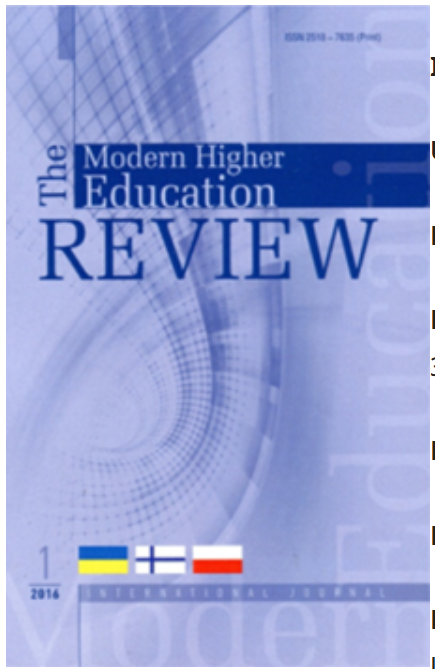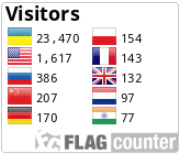INTERACTIVE TECHNIQUES IN FOREIGN LANGUAGE LEARNING ONLINE IN NON-FORMAL EDUCATIONAL INSTITUTIONS IN CHINA
DOI:
https://doi.org/10.28925/2617-5266/2024.91Keywords:
online foreign language learning, Chinese non-formal educational institutions, students’ engagement, interactive techniques, blended learning activities, motivation to learnAbstract
The article treats the currently important issues of foreign language mastering in China and the challenges of online English learning in terms of non-formal institutions. It is revealed the urgency of the research associated with the problems of dropping students’ motivation to learn foreign language, and the lack of a classroom environment that facilitates interactive and communicative language practice, which causes the necessity to find out efficient means of the students’ involvement into the interactive and practically driven forms of work. Minding the great potential of existing blended learning activities and interactive techniques, there was undertaken the attempt to engage the students of Chinese non-formal institutions in innovative foreign language practices during online classes. According to the goals of the work, it is explored and elaborated on how interactive techniques can be applied to enhance typical blended learning activities in online English learning as a second language. This study also provides detailed examples of interactive methods applied in Chinese non-formal institutions in terms of typical online learning activities. Besides, it offers a preliminary analysis of the impact of these techniques on students' learning motivation. To get preliminary outcomes and test the prepared survey reliability, it was held in several groups of a Chinese private institution. In total 27 students of senior grades who learned English online in terms of implementation of various blended learning activities enhanced with interactive methods depicted above tool part in the survey. The acceptable reliability of the scales was proved. The outcomes of the survey, according to the levels of learners’ motivation are presented and discussed.
Downloads
References
Adel A., & Dayan J. (2021) Towards an intelligent blended system of learning activities model for New Zealand institutions: an investigative approach, Humanities and social sciences communications, 8:72 DOI: https://doi.org/10.1057/s41599-020-00696-4
Aljuaid, H., (2021). Students’ Motivation to Learn English as a Foreign Language in the Context of Saudi Arabian Learners. Arab World English Journal, 12 (3), 242-256. https://dx.doi.org/10.24093/awej/vol12no3.17
Batubara, T., Derin, N., Putri, R., & Yudar, (2020). Five Factors Influencing the Students’ Motivation to Learn English as a Foreign Language: A Closer Look into Montessori Classroom Environment. REiLA: Journal of Research and Innovation in Language, 2(2), 76-84. https://doi.org/10.31849/reila.v2i2.3165
Bergmann, J., & Sams A. (2012). Flip your classroom: Reach every student in every class every day. International Society for Technology in Education.
Chen, H., & Hwang, G. (2020). Effects of using blended learning and interactive e-books on improving learning performance in a local culture course. Computers & Education, 146, 103782
Collie, R., & Martin, A. (2019). Motivation and Engagement in Learning. URL: https://doi.org/10.1093/acrefore/9780190264093.013.891.
Dellatola, D., Daradoumis, T., & Dimitriadis, D. (2020). Exploring students’ engagement within a collaborative inquiry-based language learning activity in a blended environment, Emerging Technologies and Pedagogies in the Curriculum. Springer, Singapore, pp 355–375.
Dias, M. & Brantley-Dias L., (2018). Setting the standard for project based learning: a proven approach to rigorous classroom instruction, Interdisciplinary Journal of Problem-Based Learning 11. doi:10.7771/1541-5015.1721.
Dichev, C., & Dicheva D. (2017). Gamifying education: what is known, what is believed and what remains uncertain: a critical review, in: International Journal of Educational Technology in Higher Education, 14. https://dx.doi.org/10.1186/s41239-017-0042-5
Filgona, J., Sakiyo, J., Gwany, D., & Okoronka, A. (2020). Motivation in learning, Asian Journal of Education and Social Studies, 10, 16-37. https://dx.doi.org/10.9734/AJESS/2020/v10i430273.
Glen, S. (2020). Cronbach’s Alpha: Definition, Interpretation, SPSS. https://www.statisticshowto.com/proba bility-and-statistics/statistics- definitions/cronbachs-alpha-spss.
González S., & Bonal X. (2021). COVID‐19 school closures and cumulative disadvantage: Assessing the learning gap in formal, informal and non‐formal education, European journal of education, 56(4), 607-622. https://doi.org/10.1111/ejed.12476
Herpratiwi, A., Tohir, A. (2022). Learning interest and discipline on learning motivation, International Journal of Education in Mathematics, Science, and Technology (IJEMST), 10(2), 424-435. https://doi.org/10.46328/ijemst.2290.
Hui, Y.K., Li, C., Qian, S. et al. (2019). Learning engagement via promoting situational interest in a blended learning environment. J Comput High Educ 31, 408–425. https://doi.org/10.1007/s12528-019-09216-z
Jiang, H., Islam, A. Y. M. A., Gu, X., & Spector, J. (2021). Online learning satisfaction in higher education during the COVID-19 pandemic: A regional comparison between Eastern and Western Chinese universities. Education and Information Technologies, 26(6), 6747–6769. https://doi.org/10.1007/s10639-021-10519-x
Le T., (2018). Project-based learning in 21st century: a review of dimensions for implementation in university-level teaching and learning, Proceedings of 4th ICEAC International Conference on English Across Cultures 230-241.
Lemeshchenko-Lagoda, & V., Kryvonos, I. (2020). Interactive means of motivating students to learn English for specific purposes at agrarian and technical universities, Educational Dimension, 3 pp. 233–250. https://doi.org/10.31812/educdim.v55i0.3950.
Li, H., Peng, M., Yang, M., & Chen, C. (2020). Exploring the influence of learning motivation and socioeconomic status on college students’ learning outcomes using self-determination theory, Front. Psychol, 11, 849 https://dx.doi.org/10.3389/fpsyg.2020.00849.
Mohammed, M., & Muesser, N. (2019). Blended learning motivation model for instructors in higher education institutions, International Journal of Educational Technology in Higher Education 16, 12. https://doi.org/10.1186/s41239- 019-0145-2.
Paul, R., & Elder, L. (2006). The miniature guide to critical thinking: Concepts and tools. Foundation for Critical Thinking. URL: https://www.criticalthinking.org/files/Concepts_Tools.pdf
Ren, W., Wang, R., & Nor, S. (2024). Factors influencing students' learning satisfaction and students' learning outcomes in blended learning, International Journal of Education and Practice, 12 (1). 95-108. https://dx.doi.org/10.18488/61.v12i1.3624.
Rubrica R., (2019). An action research of project based learning and understanding by design and their effects on the science achievement and attitude of science students. https://www.academia.edu/39644033.
Rutta, C., G. Schiavo, M. Zancanaro, & E. Rubegni, (2021). Comic-based Digital Storytelling for Content and Language Integrated Learning, Educational Media International, 58(1), 21-36, https://dx.doi.org/10.1080/09523987.2021.1908499
Sagri, M., Sofos, F., & Mouzaki D. (2018). Digital Storytelling, comics and new technologies in education: review, research and perspectives The International Education Journal: Comparative Perspectives 17(4)97-112. https://openjournals.library.sydney.edu.au/i ndex.php/IEJ
Shaiful I. at al, (2018). To boost students’ motivation and achievement through blended learning, Journal of Physics: Conference Series 1114 012046.
Slidesgo, (2022). https://slidesgo.com/theme/happy-summer-holidays#search-Holidays&position-13&results-402
Triarisanti, R., & Purnawarman, P. (2019). The influence of interest and motivation on college student’s language and art appreciation learning outcomes, International Journal of Education, 11(2) 130-135. https://dx.doi.org/10.17509/ije.v1.14745.
Trivedi, N., & S. Mohanti (2019). Significance of Project-based Learning in Education, JETIR 6 (2), 339-344. www.jetir.org.
Wright, A., Betteridge, D., & Buckby, M. (2006). Games for language learning (3rd ed.). Cambridge University Press.
Zainuddin, Z., Chu, S.K.W., Shujahat, M., & Perera, P. (2020). The impact of gamification on learning and instruct tion: A systematic review of empirical evidence, Educational Research Review, 30 100326. https://dx.doi.org/10.1016/j.edurev.2020.100326
Zhou L., Wang T. (2020). The effect of online learning on students’ performance: Evidence from a large-scale random assignment experiment, Computers & Education, 157, 103966.
Published
How to Cite
Issue
Section
License
Copyright (c) 2024 The Modern Higher Education Review

This work is licensed under a Creative Commons Attribution-NonCommercial 4.0 International License.













